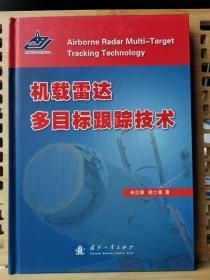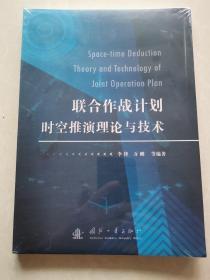
工程测量学EngineeringSurveying(英文)9787307226180
正版图书,可开发票,请放心购买。
¥ 33.81 6.9折 ¥ 49 全新
库存2件
作者尹晖(YIN Hui)、王建国(WANG Jianguo)主编
出版社武汉大学
ISBN9787307226180
出版时间2022-03
装帧平装
开本16开
定价49元
货号31394207
上书时间2024-11-19
- 店主推荐
- 最新上架
商品详情
- 品相描述:全新
- 商品描述
-
商品简介
本书是为《工程测量学》全英文教学出版的英文教材。工程测量学是测绘工程专业的一门核心必修课,
本书根据工程建设中的规划设计、建筑施工、运营管理三个阶段对测量工作的不同要求展开叙述,共分为十二章。内容覆盖了工程测量学所涉及的工程建设规划设计阶段各类地形信息的获取与应用、工程控制网的质量分析与优化设计、工程建设中的施工测量与放样方法、工程建设与运营管理中的变形监测技术与数据处理等。具体章节为:章绪论;第二章工程建设规划设计阶段地形图的应用;第三章线路测量及土方量计算;第四章水下地形测量;第五章工程控制网质量分析及优化设计;第六章施工放样技术;第七章平面曲线测设;第八章桥梁和大坝测量;第九章隧道测量;第十章竖井联系测量与陀螺经纬仪;第十一章工程建筑物变形监测;第十二章变形监测数据处理与分析。
本书可作为高等学校测绘工程专业《工程测量学》全英文课程教材,也可做工程测量技术人员参考用书。
作者简介
尹晖:武汉大学教授、博士生导师。长期从事工程测量学教学工作,在变形监测分析与灾害预报、空间信息处理理论和方法等领域有深入研究,代表作有《时空变形分析与预报的理论和方法》,《变形监测数据处理》,《测绘工程专业英语》。
目录
Chapter 1 Introduction
1.1 Definition of Engineering Surveying
1.2 Contents of Engineering Surveying
1.2.1 Planning Design
1.2.2 Building Construction
1.2.3 Operation Management
1.3 Historic Overview of Engineering Surveying
1.4 FIG Commission 6: Engineering Surveys
References
Chapter 2 Applications of Topographic Map in Project Planning Design
2.1 Engineering Project Management Overview
2.1.1 Project
2.1.2 Project Management
2.1.3 Engineering Survey Project
2.2 Applications of Topographic Map in Planning Design
2.2.1 Roles of Topographic Maps
2.2.2 Uncertainty Analysis for Large-scale Topographic Mapping
2.2.3 Engineering Design Requirements for Topographic Maps
References
Chapter 3 Route Surveying and Earthwork Computations
3.1 Introduction
3.1.1 Basic Concepts
3.1.2 Unification of Three Stage-wise Control Networks
3.2 Preliminary Surveys
3.2.1 Horizontal Control
3.2.2 Vertical Control
3.2.3 Topographic Mapping
3.3 Staking Out Surveying
3.3.1 Staking Out the Route Centerline Using a Total Station System
3.3.2 Staking Out with RTK GNSS
3.4 Longitudinal and Cross Section Profile Survey
3.4.1 Definitions and Tasks
3.4.2 Longitudinal Profile Surveying and Plotting
3.4.3 Cross Section Surveying and Plotting
3.5 Volumes of Earthwork Computations
3.5.1 Digital Terrain Model
3.5.2 Area Computations
3.5.3 Volumes of Earthwork and Applications
References
Chapter 4 Hydrographic Surveys
4.1 Introduction
4.2 Specifications and Technique Planning
4.2.1 Technical Specification
4.2.2 Technical Planning
4.2.3 Hydrographic Survey Control
4.3 Bathymetric Surveys
4.3.1 The Principle of Sounding
4.3.2 Sounding Lines
4.3.3 Sounding Tools
4.3.4 Corrections to Soundings
4.4 Positioning Systems
4.4.1 Visual Survey Methods
4.4.2 Electronic Survey Methods
4.4.3 GNSS Methods
4.5 Observation of Water Surface Elevation
4.5.1 Elevation Reference Datum
4.5.2 Observation Tools
4.5.3 Working Water Level Calculations
4.6 Survey Report and Applications
4.6.1 Graphic Report
4.6.2 Written Report
4.6.3 Applications
References
Chapter 5 Quality Analysis and Optimal Design of Engineering Control Networks
5.1 Introduction
5.2 Overview of Parametric Least-squares Adjustment
5.2.1 The Principle
5.2.2 Least-squares Solution
5.3 Quality Analysis of Control Networks
5.3.1 Measures of Precision
5.3.2 Reliability and Outlier Detection
5.3.3 Sensitivity
5.3.4 Cost
5.4 Optimal Network Design
5.4.1 Generals
5.4.2 Network Design Problems
5.4.3 Approaches to the Optimal Design
References
Chapter 6 Laying Out Techniques
6.1 Introduction
6.2 Error Analysis in Construction Surveying
6.2.1 Construction Tolerance and Allowance
6.2.2 Error Analysis and Partition
6.2.3 Error Behaviour in Surveying vs. in Laying out
6.3 Laying Out Horizontal Positions
6.3.1 Laying Out Using Polar Coordinates
6.3.2 Laying Out Using Rectangular Coordinates
6.3.3 Laying Out Using Free Station
6.3.4 _ Other Laying Out Methods
6.4 Elevation Laying Out Techniques
6.4.1 Laying Out Using Spirit Leveling
6.4.2 Laying Out Using Trigonometric Leveling
6.5 Laying Out Using GNSS Receivers
References
Chapter 7 Laying Out Horizontal Curves
7.1 Introduction
7.2 Circular Curves
7.2.1 Basic Elements and Terminology of a Circular Curve
7.2.2 Circular Curve Formulae
7.2.3 Mileage Computation of Key Points
7.2.4 Staking Out Key Points
7.3 Transition Curves
7.3.1 Superelevation
7.3.2 Transition Curve
7.3.3 Geometry of a Composite Curve
7.3.4 Coordinating a Transition Curve
7.3.5 Stationing Data of Key P
内容摘要
本书是为《工程测量学》全英文教学出版的英文教材。工程测量学是测绘工程专业的一门核心必修课,本书根据工程建设中的规划设计、建筑施工、运营管理三个阶段对测量工作的不同要求展开叙述,共分为十二章。内容覆盖了工程测量学所涉及的工程建设规划设计阶段各类地形信息的获取与应用、工程控制网的质量分析与优化设计、工程建设中的施工测量与放样方法、工程建设与运营管理中的变形监测技术与数据处理等。具体章节为:第一章绪论;第二章工程建设规划设计阶段地形图的应用;第三章线路测量及土方量计算;第四章水下地形测量;第五章工程控制网质量分析及优化设计;第六章施工放样技术;第七章平面曲线测设;第八章桥梁和大坝测量;第九章隧道测量;第十章竖井联系测量与陀螺经纬仪;第十一章工程建筑物变形监测;第十二章变形监测数据处理与分析。
本书可作为高等学校测绘工程专业《工程测量学》全英文课程教材,也可做工程测量技术人员参考用书。
相关推荐
— 没有更多了 —




































以下为对购买帮助不大的评价